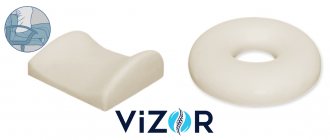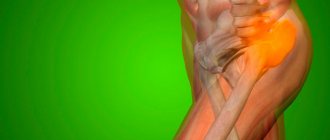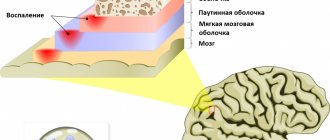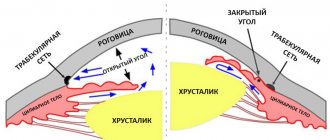There are several reasons for pain in the lower leg area. Here are some of them:
- injury,
- spasm,
- stretching,
- muscle pain after exercise,
- flat feet,
- varicose veins of the lower extremities,
- thrombosis of the veins of the leg,
- obliterating atherosclerosis of the arteries of the lower extremities,
- arterial thrombosis.
The most common causes of acute pain in the lower leg are:
- injury,
- spasm,
- sprain of the musculo-ligamentous apparatus of the leg,
- muscle pain after exercise.
As a rule, in this case, pain in the lower leg appears immediately or after a short period of time after an injury or physical effort. As a rule, such pain goes away within a few hours or days, without leaving any serious consequences. If the pain in the lower leg does not subside over time and does not go away within several days, then it is recommended to contact a general surgeon or traumatologist, who will prescribe the optimal examination and treatment plan.
Why do my shins hurt when I have flat feet?
Flat feet are characterized by an irregular anatomical shape of the foot (flattening of its longitudinal and transverse arch). As a result, the foot ceases to function as an effective spring when walking.
As a result, additional load falls on the muscular-ligamentous apparatus of the lower leg and foot, which become overloaded and quickly tire while walking. Due to muscle fatigue, painful sensations appear in the lower leg, especially in the anterior muscle group. After a short rest, such pain usually goes away quickly. Using comfortable shoes with shock-absorbing soles or orthopedic insoles significantly alleviates pain in the lower legs when walking.
Damage to bone tissue and subglobs
A common cause of damage to bone integrity is falls and systematic loads. There are a number of diseases that cause damage to the shin bone:
- osteomyelitis, a purulent process of a necrotic nature, affects the muscles and brain inside the bone. The basis for the occurrence are purulent microbes that enter the body through tissue damage or as a result of open fractures;
- Osgood-Schlatter disease, inflammation of the tibia between the tendon joints. A common cause of pain in the knee area and front in adolescents. Reasons: intensive growth of bones and muscles of the ankle at this age;
- arthritis, provokes internal pain in the muscles of the leg and the front of the lower leg;
- pathology of a bone joint of a dystrophic nature, called osteoarthritis. The pain is constant; Osteoarthritis of the legs
- the tibia becomes inflamed due to running on a hard surface. The tibia hurts due to mechanical stress;
- damage, inflammatory processes in the meniscus, are formed as a result of strong flexion and extension of the knee. When there is a tear in the meniscus, the leg cannot be straightened due to severe pain. Bleeding occurs between the tendons in the knee.
Why does the lower leg hurt with varicose veins?
With varicose veins, blood stagnation develops in the vessels. Blood stops circulating through the vessels like in a healthy person. Stagnation leads to overstretching of the walls of venous vessels and edema. These consequences of venous stagnation are the cause of pain. Elevated position of the legs or the use of elastic compression products (compression hosiery, elastic bandages) lead to a decrease or complete disappearance of venous stasis and lead to the disappearance of pain.
Also, pain in the lower leg due to varicose veins decreases when walking or exercising on an exercise bike (riding a bicycle), which is also associated with stimulation of blood circulation in the veins and a decrease in stagnation. They intensify under static loads - prolonged standing or sitting, as well as when lifting heavy objects. If you notice signs of venous stagnation, you should consult a specialist in the field of vascular surgery, including phlebology.
Panniculitis
Being an inflammatory process localized under the skin, it can provoke the formation of painful balls up to 50 mm in size in the fat layer. The skin swells and becomes bright red. The formations last up to several years, bursting, leaving small depressions on the surface, and the skin becomes covered with dark spots.
The appearance of pathology is accompanied by pain effects, nausea, vomiting, lack of appetite, and increased body temperature of the patient.
How do you know if your lower leg hurts from venous thrombosis?
Vein thrombosis (or venous thrombosis) is of two types - superficial and deep.
Thrombosis of the superficial veins is manifested by inflammation along the saphenous veins in the form of redness of the skin and a painful cord in this area. In the case of deep vein thrombosis, the disease may not reveal itself externally or may only manifest itself as swelling of the limb. Both superficial and deep venous thrombosis in the legs is a dangerous situation that requires immediate attention to a vascular surgeon.
Venous thrombosis in the legs often develops in people suffering from varicose veins, who have undergone surgery, trauma, as well as in women taking hormonal contraceptives.
At-risk groups
Diseases that cause pain behind the knee can be different. In particular, arthrosis, which is more typical for older people, sometimes affects young people, most often after injuries. Athletes who often injure one or another part of their body are most susceptible to it. Also, due to overloads, people with excess weight and loaders should be included in this group. In addition, diseases of this kind can often occur in anyone, especially if the problem tends to be transmitted by heredity. Arthrosis often occurs in female families - scientists believe this is a genetic predisposition, hormonal fluctuations at different periods of a woman’s life, and according to statistics, and as a consequence, a huge proportion of those suffering from pain and joint deformities are women.
Advice. A disease such as osteoporosis is characterized by a lack of calcium and vitamin D in the body and physical inactivity. That is why it is worth monitoring their presence and, if necessary, replenishing their level. This especially applies to those who do not follow proper nutrition, who are prone to alcohol and smoking, as well as other bad habits.
How does pain in the lower leg manifest itself in obliterating atherosclerosis of the lower extremities?
In diseases of the arteries of the legs, the delivery of blood to the muscles of the lower leg is disrupted. As a result, the muscles cannot work for a long time, as they quickly get tired from the lack of oxygen and nutrients. This is manifested by a feeling of fatigue, pain or cramps in the lower leg muscles when walking a certain distance, after which the patient is forced to stop. After a few minutes of rest, the pain goes away and the patient can resume walking again. Having walked the same distance as the first time, he is forced to stop again. Thus, the patient’s usual walking distances turn into walking with stops. With timely contact with a vascular surgeon, it is possible to reduce or completely eliminate such complaints.
Cause of pain
The lower part of the leg, namely from the knee to the foot itself, is called the lower leg. It consists of muscles, many nerve endings and blood vessels, as well as the fibula and tibia.
Damage to any of the components leads to unpleasant sensations in this area.
In general, there are a number of reasons why pain below the knee occurs. The first thing you should pay attention to is microelements. A lack of potassium, calcium and magnesium in the blood affects the musculoskeletal system. In addition, taking certain medications leads to the fact that all of the above components are simply washed out of the tissues. Pain below the knee may indicate other diseases:
- atherosclerosis, arthritis, arthrosis;
- thrombosis;
- osteoporosis;
- varicose veins;
- infectious lesions;
- rheumatism;
- polyneuropathy;
- lymphostasis;
- tumors of various kinds.
Mechanical damage to the anatomical structure of the lower leg, trauma and prolonged physical activity are also causes of discomfort in the lower extremities.
Accordingly, specialists who have a profession related to sports, heavy weight or constant walking may complain of pain in the legs.
Everyone should know about the consequences after bone fractures, sprains or torn ligaments. Most people begin to notice discomfort in the lower leg after traumatic injuries. Inflamed muscles and joints, no matter what causes the process, always hurt. Let's look at the most common options.
Varicose veins
This insidious disease is difficult to recognize in the initial stages. Heaviness and swelling appear at the end of the working day and are associated with ordinary fatigue. My legs hurt even if I stand upright for a long time. To remove unpleasant symptoms, simply place them on a raised surface. This promotes blood flow and normalizes the general condition. Painful sensations disappear after sleep or other type of passive rest. Therefore, not everyone considers it necessary to pay attention to this. Subsequently, this is fraught with dilation of the veins, the formation of blood clots, which is accompanied by aching pain.
Thrombosis
The disease is one of the most common and is characterized by the presence of pronounced symptoms. Doctors distinguish several types of thrombosis:
- venous;
- arterial.
Both types have their own distinctive features and develop quickly and painfully. The first type is easy to recognize within a few days. In addition to the feeling of heaviness, swelling of the legs and discomfort, redness appears. The shin can change color from red to bluish, depending on the degree of development. In addition, the temperature at the location will be higher, which means the leg will become hot. Venous thrombosis has dire consequences. If medical care is not provided in a timely manner, necrosis or gangrene may develop after a few days. The second type is characterized by opposite symptoms and can be observed within 2-3 hours. The affected area turns pale and cold. It may feel like your lower leg is numb below the front knee. This is caused by malfunctions of the circulatory system. Neglecting the above symptoms is fraught with tissue death.
Atherosclerosis
The disease is caused by the presence of atherosclerotic plaques, which adversely affect the arteries, impairing blood flow. At the first stage, discomfort is observed after walking long distances or a “standing” lifestyle. The limbs hurt and ache. Having rested, the person will forget about the little trouble and move on without attaching any importance to it. Then the pain makes itself felt even in calm conditions. The external manifestation is characterized by the presence of dryness and flaking of the skin, as well as changes in the nail plate. If you do not attach importance to this, chronic ulcers will subsequently appear, followed by necrosis.
Polyneuropathy
This disease is directly related to diabetes, which affects all tissues, organs and nerve endings. It gradually affects every part of the body, and the lower leg is no exception. Diabetic polyneuropathy symbolizes complications and progressive deterioration. The area below the knee suffers no less than other organs. Moreover, discomfort in the lower leg may help identify diabetes. Constant burning pain may not always be caused by exercise. In any case, the first thing you should do is consult a doctor, undergo the necessary examination and identify the real cause.
Pain below the knee with varicose veins
A typical situation in which a person is bothered by heaviness in the calves, swelling, “roaring in the legs,” and sometimes cramps. This picture is due to poor outflow of venous blood from the calf muscles, resulting in swelling, fluid accumulation, heaviness and pain. Superficial veins swell, blue venous nodes appear, and the skin of the lower leg takes on a brownish tint (pigmentation). The causes and treatment of varicose veins are described in detail in our article Varicose veins: causes, treatment, symptoms. Osteopathy helps not only to get rid of the symptoms of this disease, but also to prevent its further development, and often, the need for surgery.
The benefits of osteopathy in the treatment of foot diseases
- Osteopathy restores not only the function of the damaged area, but also the biomechanics of your entire body.
- We find the reason that led to your dysfunction and eliminate it.
- We do not give you injections into the joint cavity, we do not use hormonal drugs, which means you have no risk of infection or other complications.
- We provide all patients with a full osteopathic examination and examination, regardless of complaints. This allows for correction at a higher level, including the body’s reserves and directing them towards self-healing.











